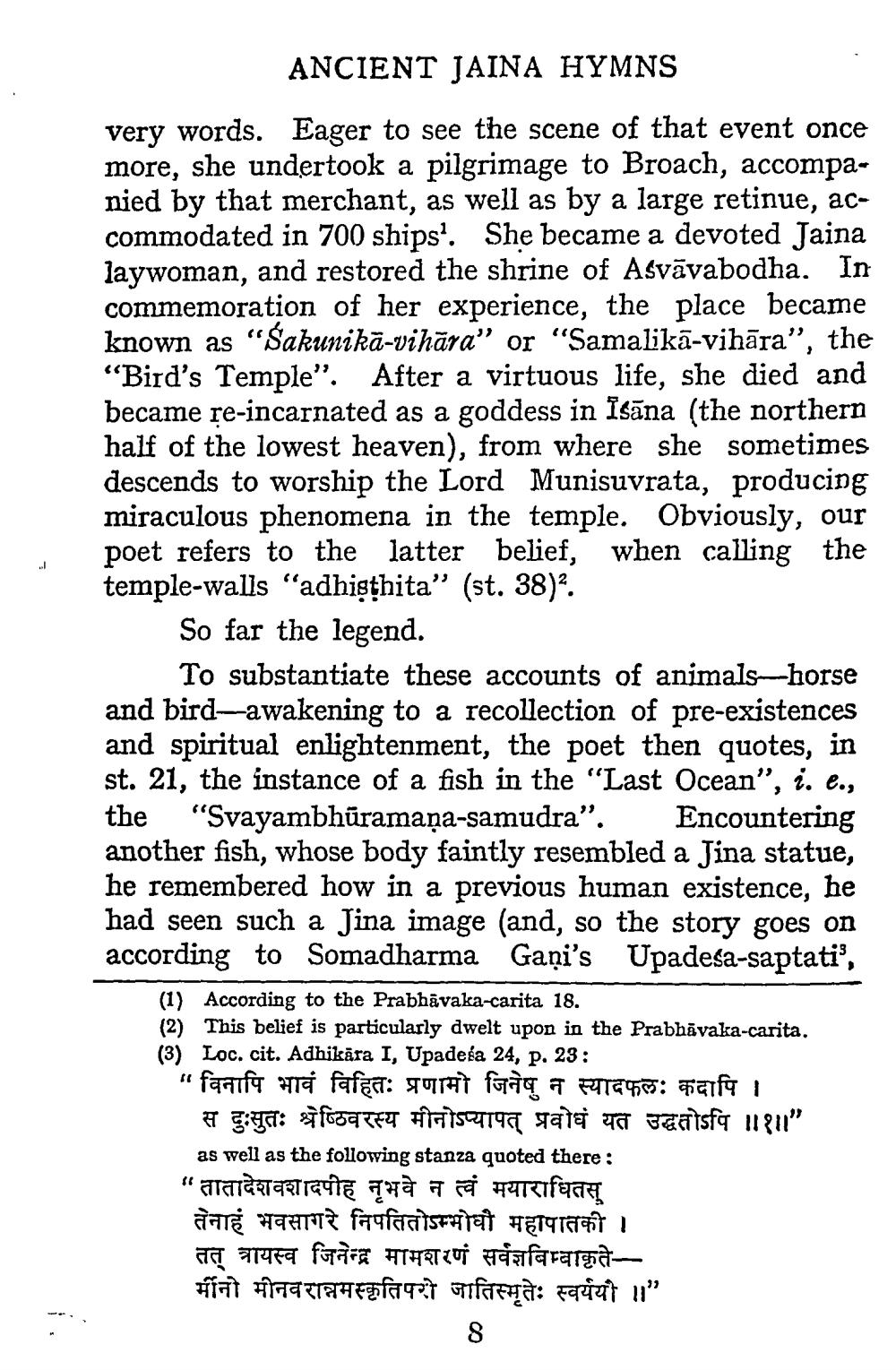________________
ANCIENT JAINA HYMNS
very words. Eager to see the scene of that event once more, she undertook a pilgrimage to Broach, accompanied by that merchant, as well as by a large retinue, accommodated in 700 ships'. She became a devoted Jaina laywoman, and restored the shrine of Asvāvabodha. In commemoration of her experience, the place became known as "Sakunikā-vihāra" or "Samalikā-vihāra", the "Bird's Temple". After a virtuous life, she died and became re-incarnated as a goddess in Isāna (the northern half of the lowest heaven), from where she sometimes descends to worship the Lord Munisuvrata, producing miraculous phenomena in the temple. Obviously, our poet refers to the latter belief, when calling the temple-walls "adhisthita” (st. 38).
So far the legend.
To substantiate these accounts of animals_horse and bird-awakening to a recollection of pre-existences and spiritual enlightenment, the poet then quotes, in st. 21, the instance of a fish in the "Last Ocean”, i. e., the "Svayambhūramaņa-samudra”. Encountering another fish, whose body faintly resembled a Jina statue, he remembered how in a previous human existence, he had seen such a Jina image (and, so the story goes on according to Somadharma Gani's Upadesa-saptati",
(1) According to the Prabhāvaka-carita 18. (2) This belief is particularly dwelt upon in the Prabhāvaka-carita. (3) Loc. cit. Adhikāra I, Upadesa 24, P. 23: " विनापि भावं विहितः प्रणामो जिनेषु न स्यादफल: कदापि ।
स दुःसुतः श्रेण्ठिवरस्य मीनोऽप्यापत् प्रबोधं यत उद्धतोऽपि ॥॥" as well as the following stanza quoted there : " तातादेशवशादपीह नृभवे न त्वं मयाराधितस् तेनाहं भवसागरे निपतितोऽम्भोधी महापातकी । तत् त्रायस्व जिनेन्द्र मामशरणं सर्वज्ञबिम्बाकृतेमीनो मीनवरानमस्कृतिपरो जातिस्मृतेः स्वर्ययो ॥"




